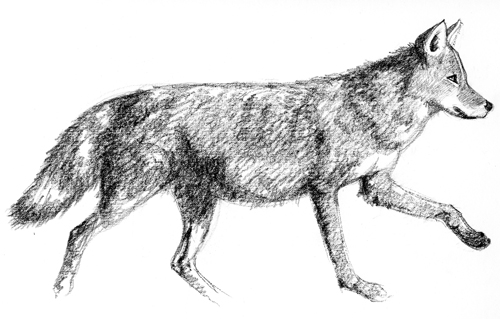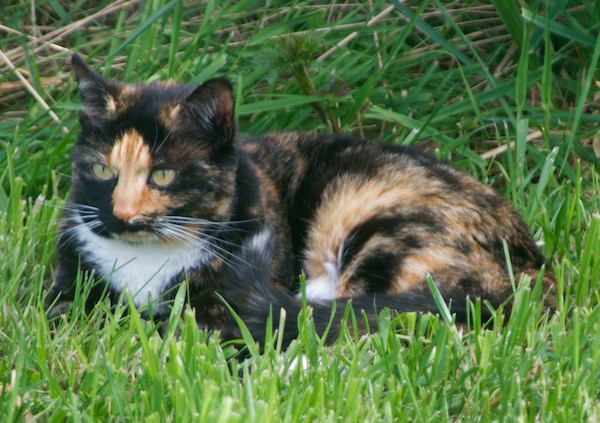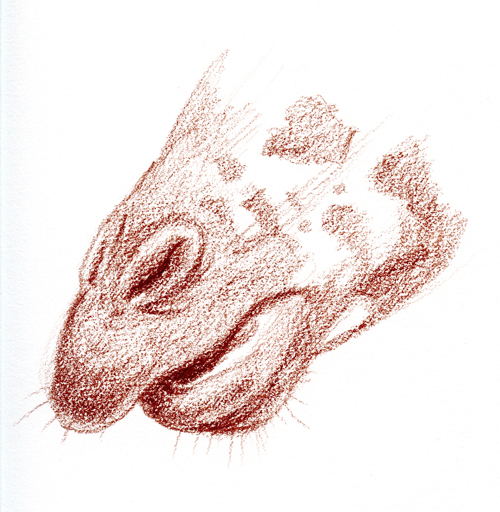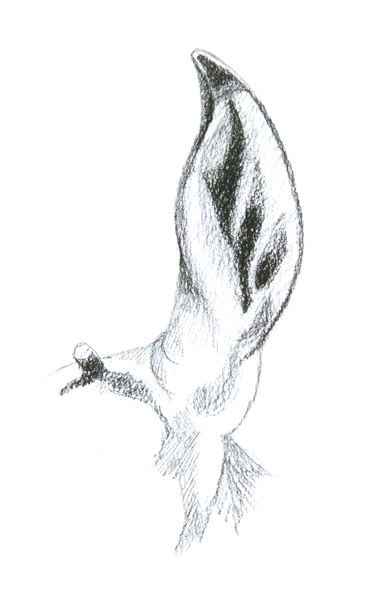All artists have favorite subject matter. For many of us it’s animals. I can’t remember a time when I didn’t love to draw and I mostly drew animals. Now I have the good fortune to be a professional animal artist. If you’ve always wanted to draw animals, I’d like to help you get started first with some basic tips, and then we’ll move on to the nitty gritty of how to draw an animal’s head. If what you’d like is to improve or change how you currently draw animals, perhaps you’ll find useful information here also.

Let’s start with some basic for drawing realistic animals.
Use live animals as your models whenever possible
First of all, it’s important to note that while many representational artists in a variety of media and genres work from photographs, and I am one of them, there is no substitute for drawing from live animals.
If your city or town has a zoo or aquarium, those are great places to sketch animals, including fish. Drawing a live animal is a very special way to experience seeing it, the memory being stored in your hand and on paper, not just in your mind or as a photograph. It’s really about the process, not the end result. I’ll be coming back to this topic in the future.
Try to take your own photographs
It’s also always better to draw from photographs you’ve taken yourself. You will have a more authentic emotional response working from your own images, which will lead to more successful work. When you draw from another’s photo, you are only seeing what a particular photographer saw at the instant they clicked the shutter. You have only their personal vision, not yours.
However, if you’re just starting out or wanting to learn to draw a species that is unfamiliar, then find the best reference on the internet that you can and work from it using the tips and information I’m going to give you. Just don’t sell the result because that would almost certainly violate the photographer’s copyright and it’s not only courteous, but also ethical, to respect another creative person’s work.


Start with the largest, simplest shapes
Above is a demonstration of how I do a graphite drawing, using a photo I took of Michiko, one of our three cats. I start with the largest, simplest shapes, but I don’t use generic ovals or circles as was often taught in the past. I look at my reference photo and get the basic contours correct right from the start.
Don’t be afraid to erase
If I miss, then I take a kneaded eraser and lightly rub it out and do it again. It’s great when you can get everything right the first time every time, but no artist ever does. You can look at drawings by the greatest masters and find ones where they were searching for the correct line and didn’t erase the “mistakes”.
It’s perfectly ok to keep correcting as needed because that’s how you train your eye. The fact that you see that something isn’t right is good news. The second drawing shows, from right to left, how I add tone and value, working gradually from light to dark. I started with a 2B pencil and finished the darkest areas with a 6B.
Tips for drawing the parts of an animal’s head
Correct and accurate observation is the starting point. Then explore further with pencil and paper, being as precise as possible. You can use a mirror to check your work. It’s almost magical sometimes how things that need correcting jump out.

Drawing of a horse’s eye
Eyes
It’s important to notice where the eyes are located in the subject’s head, including how far apart they are. Keep in mind that an eyeball is round, and accordingly the eye should show a curve where it is visible, instead of appearing flat. How far into the eye socket is the eyeball? What are the shapes around the eye? Getting those correct is necessary to capture expression and likeness.

Drawing of a grizzly bear’s nose
Nose
Noses can be difficult since they have few, if any, hard edges. Draw the shape lightly and don’t make a hard edge unless you’re sure you can see one. You might want to do a study of just the nose before doing the whole head to make sure you understand its structure. Is it flat? How big are the nostrils? How far is the bottom of the nose from the upper lip of the mouth? This is very important in getting the appearance of an animal’s head correct.

Drawing of a giraffe’s mouth
Mouth or muzzle
Like noses, most mammal mouths don’t have hard edges. The mouth and nose often form a single shape: the muzzle. Does it project from the plane of the face like a grizzly’s? Is it flat like a gorilla’s? Is it a continuation of the head like on a horse? Does it have soft lips like a camel or giraffe?

Drawing of a pronghorn antelope’s ear
Ears
Notice how the ears are set on the head. Are they high on the skull or low? Big in relation to the rest of the head or small? How does the animal carry their ears when not alert? Are they shallow, almost flat or cupped? Is there a lot of fur in and around them or are is the hair very short?


And, for all beginners, here’s two photos to help get you started…
And for you to work from, here’s a kitten who I fostered for a couple of months, Note that his face, eyes, nose and mouth, are quite small and close together in comparison to his head. Getting these proportions correct is what will make him look like a kitten instead of an adult cat. The same is true of a human baby. The second photo is a lioness I saw at a zoo. Can you capture her expression? And the position of that hind leg with the paw slightly upturned? The kitten is soft and sweet. The lioness has seen something and is focused on it. Try to capture those characteristics.
Now, gather all the right materials!
You’ll need a sharp pencil and any kind of smooth drawing paper. The regular paper you would use in a computer printer will work fine. I personally like to work on Strathmore 300 vellum bristol with Derwent Graphic or Staedtler Mars Luminograph pencils. I do any erasing with a Prismacolor kneaded eraser. You do need a pencil that with a soft enough lead that you can get the darkest darks.
Happy drawing!

I'm interested in learning to draw realistic animals, particularly my own but also others.
this is not what i am looking for
Can you give me some tips for drawing the fur